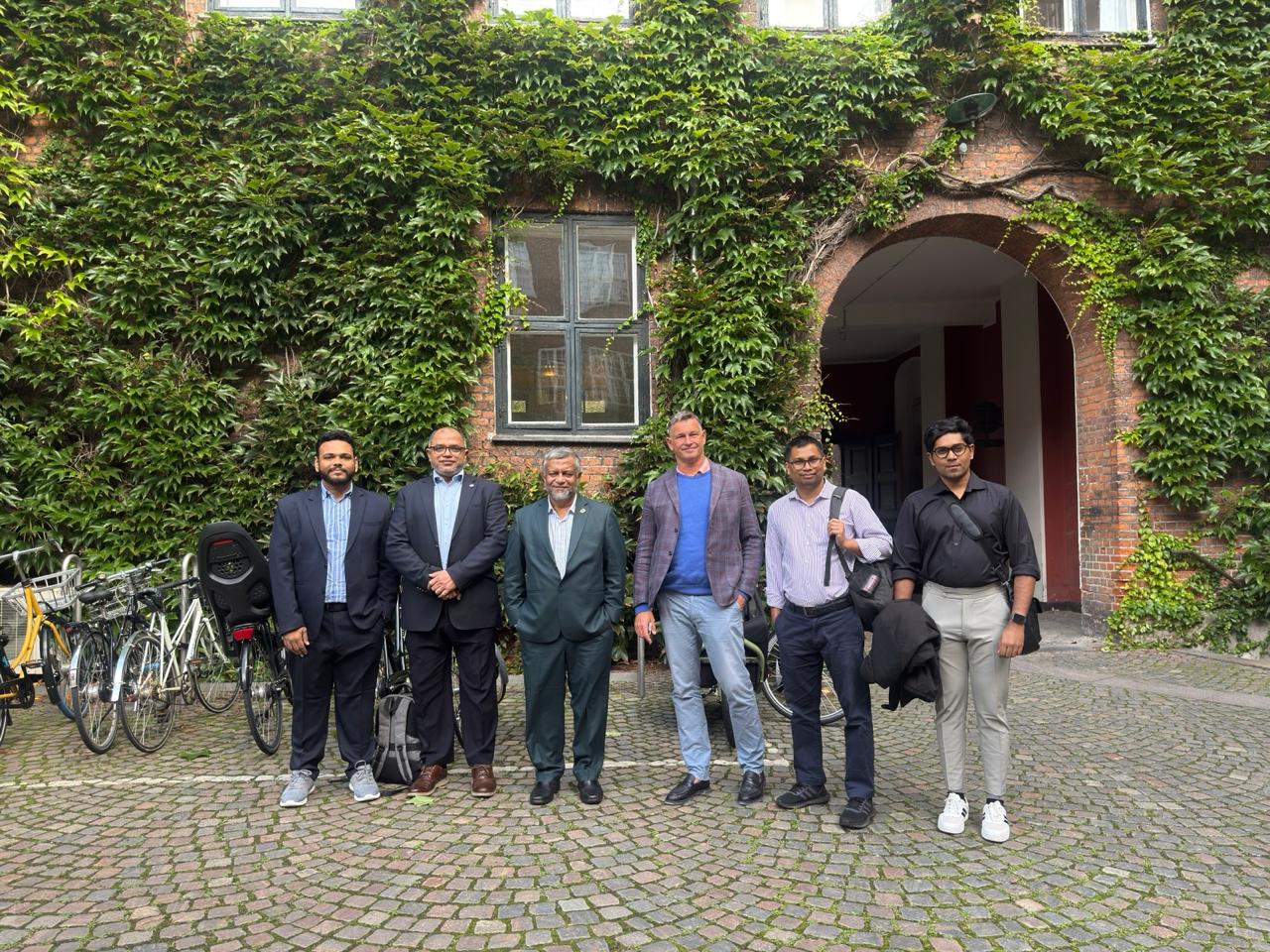Susleather Project Team Joins Analytical Workshop in Copenhagen, Denmark, and Visits Tannery Factories in Italy

The Susleather Project Team from Bangladesh participated in an insightful analytical workshop at the University of Southern Denmark’s Copenhagen Campus. The two-day workshop, which began on September 22, 2025, featured key figures from the project, including Professor Dr. Md. Ashraful Hoque, Vice Chancellor of Ahsanullah University of Science and Technology (AUST), Project Leader Professor Dr. Mohammad Sarwar Morshed, Project Coordinator Dewan Ahsan, and Deputy Leader Dr. Abu Hamja. Research Assistants Md Mahfujul Haq, Asif Mustafa, and Mongsathowai Marma were also part of the team and actively participated in the workshop.

The event, led by Professor Dr. Jan Vang from the University of Southern Denmark, focused on various analytical methodologies critical to advancing the scientific papers for the Susleather project. It provided an excellent opportunity for knowledge exchange and collaboration, particularly in the field of sustainable leather production.

On the final day of the workshop, the Susleather team met with Peter Hasle, Professor of Global Sustainable Production at ITI, University of Southern Denmark. As a token of goodwill, the Bangladesh team exchanged souvenirs representing their homeland with the Danish project team, strengthening the collaboration.

Further strengthening their international presence, the Susleather team gave an interview to local journalists, discussing the status of the Bangladeshi tanning industry. The interview allowed the team to highlight the unique challenges and opportunities within the sector and share their vision for sustainable practices in Bangladesh’s leather production.

Following the successful workshop in Copenhagen, the Susleather team traveled to Italy for a firsthand experience of tannery operations. During their visit, they toured some of the best factories in Italy known for their innovative and sustainable tanning processes. The visit was a great learning experience, as the team was able to observe the structural and managerial differences between the Italian factories and the practices employed back in Bangladesh. The exchange of ideas and insights proved to be invaluable in refining their project approaches.ve bond between the two groups.

As a gesture of mutual respect, souvenirs were also exchanged between the Susleather team and the factory teams in Italy. This visit not only allowed the teams to deepen their understanding of the tanning industry but also fostered international collaborations aimed at improving sustainable practices in leather production.

During both the workshop in Copenhagen and the tannery visits in Italy, several important findings emerged that will shape the direction of the Susleather project. The team identified key structural and managerial differences between the operations in Denmark, Italy, and Bangladesh. Notable insights included the use of innovative tanning processes and sustainable practices in Italy, such as non-toxic chemicals, energy-efficient processes, and advanced waste management systems. Italian factories prioritized employee welfare, implemented rigorous quality control, and integrated digital systems to

optimize production. Automation in tanning processes reduced labor costs and boosted efficiency. The team also observed effective supply chain collaboration, continuous employee training, resource-efficient technologies like water recycling, and a more centralized management style in Italy. Additionally, Italian tanneries demonstrated greater product diversification, eco-friendly packaging innovations, and a strong customer-centric approach. Finally, a significant emphasis on R&D for quality and sustainability was noted,
offering valuable lessons for improving practices in Bangladesh.
In addition to their factory visits, the team also explored the leather market in the Tuscan city, engaging with local product sellers to gain insights into sourcing practices and market trends. These discussions were instrumental in broadening the team’s understanding of the international leather supply chain and identifying potential areas for improvement in Bangladesh’s tanning sector.

Both the workshop in Denmark and the tannery visits in Italy have contributed to the continued success of the Susleather project, which remains focused on creating sustainable solutions for the leather industry. The team’s efforts are poised to have a significant impact on the global leather production landscape.